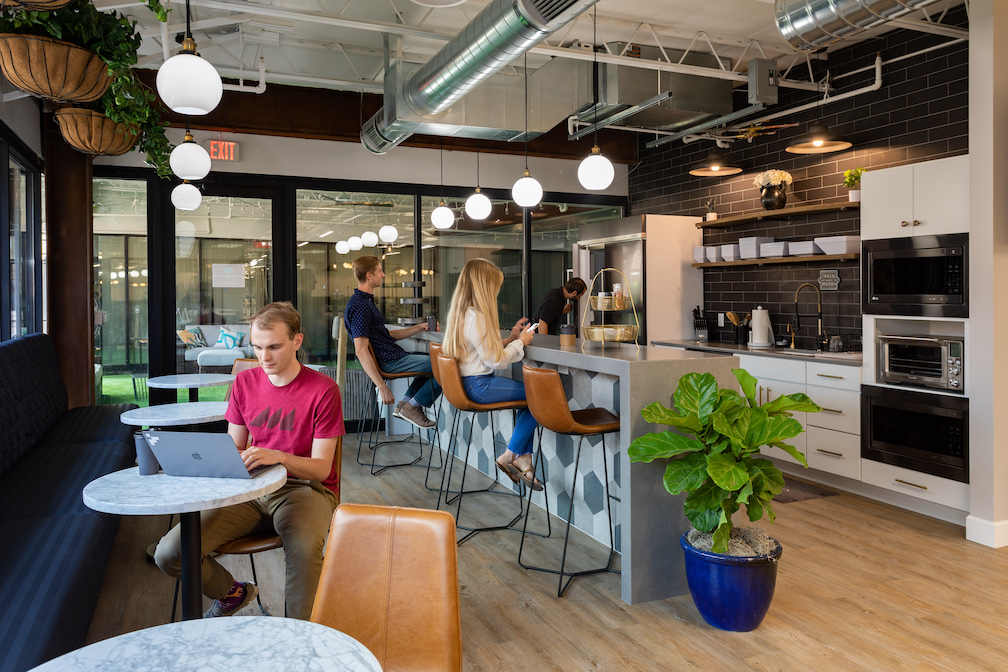As remote and hybrid work continues to dominate the workplace, solo professionals face an ongoing challenge: how to connect with other people.
Because while working from home or independently pursuing work goals has several advantages, it’s an isolating experience. Lack of community, decreasing socialization, and fewer connections can have negative professional and personal outcomes.
Here we explore the solo professional experience with socialization, why you need social interactions, and three areas to leverage to get there.
The Solo Professional Experience

Solo professional is a catch-all term for freelancers, contract workers, remote employees, or other professionals who primarily work on their own, apart from interacting physically with a team of colleagues or partners.
Today, this category is rapidly growing. One 2022 study found that 36% of employed respondents identified as independent workers, up from 27% in 2016. When it comes to remote or hybrid work, both are favored by employees—one 2023 study found that 64% of respondents prefer fully remote work and 68% prefer hybrid work, as opposed to fully-in person work.
Employees, then, generally prefer some level of solo work. Benefits like a shorter commute time, more flexibility, and increased work-life balance all drive the movement.
But what are the downsides? A big one is isolation. Multiple studies demonstrate this phenomenon:
- Participants in a Japanese study who worked remotely four or more days per week were more likely to report feeling lonely.
- Microsoft’s New Future of Work report found that 55% of hybrid employees and 50% of remote employees feel lonelier at work than before going hybrid and work.
- The same report found that 59% of hybrid employees and 56% of remote employees report having fewer work “friendships.”
- A 2021 study found that nearly two-thirds of people working from home feel isolated or lonely at least sometimes, and 17% do all the time.
Loneliness and isolation are not benign—it leads to several problems for both your physical and mental health. The CDC reports the following increased risks:
- Heart disease and stroke
- Type 2 diabetes
- Depression and anxiety
- Addiction
- Suicidality and self-harm
- Dementia
- Earlier death
More specifically to the workplace, loneliness and isolation have been linked to psychological detachment and emotional exhaustion among employees and negative predictions for organizational commitment, perceptions of coworker support, and perceived performance.
Because of these various negative impacts, loneliness and isolation leads to worse job performance. In fact, one study found that the lower the lonelier employees were, the lower the performance ratings they received from their supervisors.
Why You Need Professional and Social Interactions

All this data demonstrates that loneliness and isolation are real and increasing problems among solo professionals.
The antidote is simple, but not always easy—creating more connections in your daily work life.
This can be done in two primary ways:
- Increase professional connections: Examples include in-person meetings, networking, training and seminars, team bonding, or working on projects together.
- Increased social connections: Examples include casual “water-cooler” talk, happy hours and social events, interpersonal support, conversations, connecting over hobbies and interests, prioritizing social outings, or talking with loved ones more often.
Both are important and can decrease experiences of isolation and loneliness. Professionals should differentiate between professional and social interactions, but equally allocate time to prioritize both in your schedule.
3 Areas to Build and Prioritize Connections
To build and prioritize professional and social connections, focus on leveraging these three areas: your workspace, your schedule, and your free time.
Spend some time auditing each area by asking a few key questions:
- What am I already doing to foster connections in this area? Can I do more?
- What can I include in this area to boost connections?
- Is there someone who can help me stay accountable to new goals?
- Who do I admire or look up to and how can I tap into some of their habits or routines to foster my own connections?
- What’s realistic given my stage of life and responsibilities?
- What are three SMART goals I can make to stay on track with becoming more sociable and connected?
1. Leverage Your Workspace

If you are a solo professional feeling the impacts of isolation and loneliness, it’s time to consider if your work-from-home setup is actually working for you. Getting out of the house and changing your workspace can be an important way to combat a lack of connection.
Coworking spaces offer a productive, community-focused environment with like-minded professionals.
At The Post, we create opportunities for intentional community-building through organized events but also foster organic connections. Our space is designed to support in-person connection, whether it’s chatting with another member in the lounge or bonding over a cup of coffee. By being around other professionals, you can form social and professional connections.
You can also use the space to host in-person meetings by booking a meeting room or hosting an event in our flex space. Being part of a space like The Post has a host of coworking community benefits that naturally extend your social and professional connections, helping you break free from loneliness.
2. Leverage Your Schedule

Another key way to foster more connection is to leverage and optimize your schedule. You can do this in two key ways:
- Time blocking: Be intentional about social connections by allocating time in your schedule for it. Just as you wouldn’t miss a work meeting on your calendar, prioritize the social meetings you commit to and add to your calendar. You can even add some general time blocks into your calendar, say 1-3 times per week, and fill them in as you intentionally reach out to people and build your connections.
- Setting boundaries: Establish clear boundaries for your work hours and personal time. This means avoiding checking emails after hours, setting your phone to silent, discussing boundaries with colleagues, and whatever else you need to do to protect your personal time. By doing this, you’ll have more time and mental space to pursue social connections.
You can also apply time management strategies to your daily work tasks and projects. The more efficient you are at work, the more time you can spend with other people.
3. Leverage Your Free Time

Finally, focus on leveraging your free time. Once you become better at time blocking and setting boundaries, you should free up some more discretionary time in your week. Instead of filling that time with more solo activities (i.e., watching TV or going on social media), consider how you can use it to increase connections.
This will look different for people at various stages of life, depending on your family situation or other obligations. Instead of feeling like you’re adding more to your already full plate, think about how you can combine regular activities with interpersonal connections.
Here are just a few ideas:
- Exercise together: Instead of your regular solo workout or run, join a class or do it with a workout buddy.
- Try a class: Join a community class that aligns with your hobbies and interests. It helps you learn a new skill and meet new people.
- Cook and eat with people: Use your meal times as an opportunity to socialize. This could be giving a loved one a call during lunch, cooking together with your family, or hosting a regular dinner party with friends.
Solo professionals need to get intentional about leveraging their workplace, schedule, and free time to increase connections and reap the benefits of more interpersonal interaction. In doing so, you’ll feel more connected, increase productivity, and enjoy better work-life balance.
Don’t spend your work days all by yourself. We invite you to join our supportive community of incredible professionals. Book a tour of The Post today.
